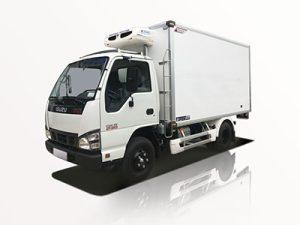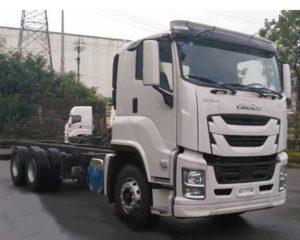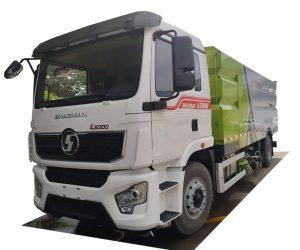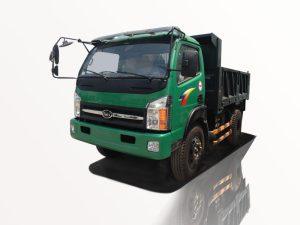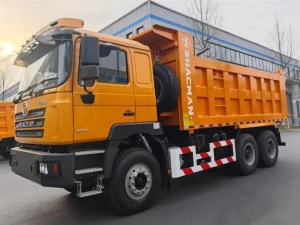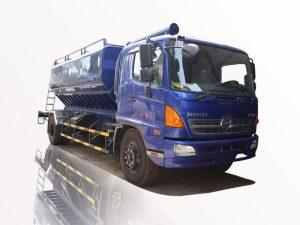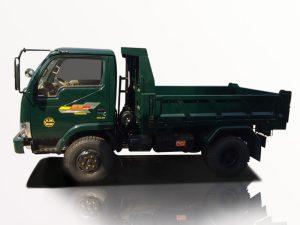Monday to Saturday - 8:00 -17:30
What is Extended Cab? Understanding the Features and Benefits
When it comes to choosing a pickup truck, the configuration of the cab is one of the most crucial decisions drivers face. Among the various cab styles, the extended cab has gained popularity for its versatility and practicality. This article will delve deep into what an extended cab is, its features, advantages, differences from other cab styles, and practical examples. We’ll also provide helpful tips to consider when purchasing this type of truck.
Table of Contents
- What is an Extended Cab?
- Brief History of the Extended Cab
- Key Features of an Extended Cab
- Advantages of an Extended Cab
- Extended Cab vs Other Cab Types
- Practical Examples of Extended Cabs
- Tips for Choosing an Extended Cab
- Maintenance Considerations
- Frequently Asked Questions
What is an Extended Cab?
An extended cab is a type of vehicle configuration mostly found in pickup trucks. Unlike a standard cab, which typically has two full-length doors and seats up to three passengers, an extended cab includes additional space behind the front seats. This extra space often has small rear doors that provide access to additional seating, albeit usually with less comfort compared to the front seats.
Seating Capacity
Extended cabs can generally seat up to five or six passengers, making them versatile for family use, work, and social occasions. However, the rear seats are more suitable for children or short rides due to limited legroom and height.
Design and Dimensions
The extended cab design usually allows for a longer bed than a standard cab, providing better utility for hauling cargo. The overall dimensions may vary based on the make and model, but the added length in the cab generally ranges from 8 to 14 inches compared to standard cabs.
Brief History of the Extended Cab
The concept of the extended cab emerged in the 1970s as manufacturers began to innovate to meet consumer demand for more passenger space without sacrificing the utility of a pickup truck. Models like the Chevrolet Silverado and Ford Ranger began offering this configuration. Over time, the extended cab became a preferred option for those looking for more flexibility in their vehicle.
Key Features of an Extended Cab
Interior Space
The primary feature of an extended cab is the extra interior space allocated for passengers. This space is typically designed to be functional rather than luxurious.
Rear Doors
Extended cabs come with rear doors that can either be full-sized or smaller “suicide” doors. These doors allow for easier access to the rear seating area, albeit with varying degrees of practicality.
Storage Options
Many extended cabs feature under-seat storage compartments and other forms of in-cab storage, making them convenient for carrying smaller items.
Versatile Bed Lengths
Extended cabs typically allow for longer bed options, making them suitable for transporting larger items without compromising passenger space.
Advantages of an Extended Cab
Flexibility and Versatility
One of the most significant advantages of extended cabs is their flexibility. Whether you’re running errands, transporting goods, or taking the family on a road trip, these vehicles can accommodate various needs.
Cost-Effective
In comparison to larger crew cabs, extended cabs are often more cost-effective, providing additional passenger space without the higher price tag associated with more spacious configurations.
Fuel Efficiency
Extended cabs generally offer better fuel efficiency than standard and crew cab alternatives due to their lighter weight and aerodynamic design.
Safety Features
- Like many modern vehicles, extended cabs come equipped with safety features such as airbags, stability control, and advanced braking systems.
Extended Cab vs Other Cab Types
Extended Cab vs Standard Cab
| Feature | Extended Cab | Standard Cab |
|---|---|---|
| Passenger Capacity | Up to 5-6 | Up to 3 |
| Rear Seating | Limited space | No rear seating |
| Cab Length | Longer | Shorter |
Extended Cab vs Crew Cab
| Feature | Extended Cab | Crew Cab |
|---|---|---|
| Passenger Capacity | Up to 5-6 | Up to 6-7 |
| Rear Door Type | Small or semi-swing doors | Full-sized doors |
| Interior Space | Limited rear legroom | More spacious |
Practical Examples of Extended Cabs
Various models on the market today feature the extended cab. Here are some popular examples:
- Ford F-150: Known for its dependability and high towing capacity, the extended cab version provides ample room for passengers and cargo.
- Chevrolet Silverado 1500: With its comfortable ride and advanced technology, the extended cab offers a solid option for both work and recreation.
- Toyota Tacoma: A compact truck with a highly regarded extended cab configuration, perfect for off-road enthusiasts.
Tips for Choosing an Extended Cab
Consider Your Needs
Evaluate your typical use of the vehicle, such as passenger transport, cargo-hauling needs, and whether you’ll be using it for work or leisure.
Test Drive
Always test drive different models to get a feel for the space, comfort, and handling of the extended cab.
Evaluate Fuel Efficiency
Check fuel economy ratings for the specific extended cab model you’re interested in to ensure it meets your needs.
Research Safety Ratings
Look into safety ratings and consumer reviews to assess the reliability of the extended cab model you’re considering.
Maintenance Considerations
Regular Servicing
Like any vehicle, regular maintenance is crucial for the longevity of an extended cab. Change fluids, check brakes, and inspect tires regularly.
Check for Rust
Especially for trucks, keep an eye on areas prone to rust, such as the undercarriage and bed. Treat any rust spots immediately to prevent further damage.
Interior Care
Protect your extended cab’s interior by using seat covers and mats to make cleaning easier and maintain resale value.
Frequently Asked Questions
1. How many people can fit in an extended cab?
Typically, an extended cab can accommodate 5 to 6 people, though rear seating space may be limited.
2. What is the difference between an extended cab and a crew cab?
An extended cab has smaller rear doors and fewer rear seat legroom compared to a crew cab, which features full-sized rear doors and more spacious interior.
3. Are extended cabs good for families?
Yes, extended cabs can be suitable for families, especially those with small children, as they provide additional seating without needing a full crew cab.
4. What should I look for in an extended cab truck?
Consider factors such as passenger space, cargo capacity, fuel efficiency, safety features, and overall fit for your lifestyle needs.
5. Is an extended cab worth the extra cost?
If you need additional seating without moving up to a larger crew cab, an extended cab can be a cost-effective balance of passenger space and utility.
6. Can I drive an extended cab truck off-road?
Many extended cab trucks are designed for off-road driving. However, you should check the specific features and ratings of the model you’re considering.


